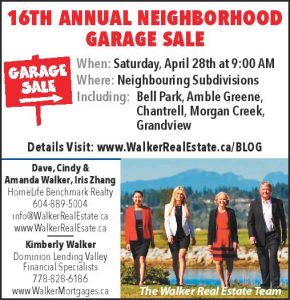If you’re an entrepreneur, business person or commercial investor then you probably have or need a commercial mortgage.
Where should you start?
Do you call your bank, or do you call a commercial mortgage broker?
I recommend you call your bank.
Yes, that’s right; I’m a commercial mortgage broker and I am telling you to start with your bank (unless you are already out of time).
Most business people have financial resources, a good credit rating and a relationship at a chartered bank or credit union.
Common sense says: start with a commercial account manager at your bank. Take your documents with you: financial statements, your mortgage request (written down), latest appraisal (if completed) and any lease agreements. Tell your account manager you want indicative rates and fees before moving forward with a mortgage application.
Spend thirty minutes in the manager’s office, no longer. Do this quickly; don’t waste time. After all, this is just one lender and you have no idea whether your bank is competitive or even if it wants to do the loan. Tell your banker you need an answer in two days. If the account manager cannot give you an indicative rate and fees in a short timeframe, you are speaking with someone who will ultimately cause you headaches down the road.
Once you have the bank’s rates and fees, it’s time to verify the information with a commercial mortgage broker who has access to multiple lenders. Now, you could call ten lenders yourself, but again, common sense says that would be a waste of time.
Call your friendly neighborhood Dominion Lending Centres commercial mortgage broker
Depending on who you call, the commercial mortgage broker will do one of three things:
• ask you to sign a representation agreement,
• give you a song and dance about the low rates they have achieved for clients, or
• tell you the truth.
Top commercial mortgage brokers cut to the truth.
Why? They are busy. They don’t waste time on deals they can’t close.
As a commercial mortgage broker, it makes no sense to sign a representation agreement until I know I can add value. Step one is simply to determine whether the mortgage is bankable. To do this, I need documents. Yes, top commercial mortgage brokers are like bankers. With the right information, transactions can be digested in 20 minutes and can be summarized in six pages or less.
Top commercial mortgage brokers say things like:
• Tell me about your deal in 5 minutes or less; nature of transaction, deal size, legal structure, cash flow, quality of financials and timeline.
• What documents can you send me? I’ll review them in 24 hours and call you back.
• Have you called your bank yet? What rate did they give you?
Tell your commercial broker the truth. If your bank offered 4.5% fixed for 5 years then say so. Why? Because no one wants to waste time. Your commercial mortgage broker doesn’t set the rates; the lenders do. Your commercial mortgage broker knows when a rate makes sense and whether lower rates are available. For example, if I can’t save you 25 basis points (that’s 0.25% per year), the reality is, by the time we pay to move the mortgage to another lender, you’re probably better off taking your bank’s initial offer.
Top commercial mortgage brokers understand this, and they will be truthful with you.
“Hey, if you have 4.5% fixed in this market for that building, in that area; take it, don’t hesitate; it’s a good deal.” I say this to entrepreneurs who call. It serves no one to enter an agreement that won’t add value. In fact, its our fiduciary duty to tell you.
Some entrepreneurs say they already have good rate (even when they don’t). “Oh, my bank offered me between 4.6 and 5.2%.” The thinking being, if they imply they have 4.6%, then the broker will work even harder to get a lower rate.
Beep. Wrong.
Brokers don’t set the rates; lenders do. This just muddies the water. If the broker thinks you already have a good rate (and best-in-market is 4.5%, only 10 basis points less), then the broker will move on right away.
About Commercial Mortgage Brokers
All a commercial mortgage broker wants, is serve you; and that means delivering the best rates and terms. There is no financial incentive for a broker to hold back information or low rates. Similarly, holding back your bank’s interest rate just wastes everyone’s time, including yours.
As a commercial mortgage broker, if I think I help you, I’ll tell you right away. I’ll review the deal quickly, determine if its bankable and touch base with a few lenders. If lenders express interest, I’ll call you to discuss what they told me.
Transparency and open communication are the keys to saving time and to getting the most from your commercial mortgage broker.
If you are getting a runaround and want the straight scoop, call me.
